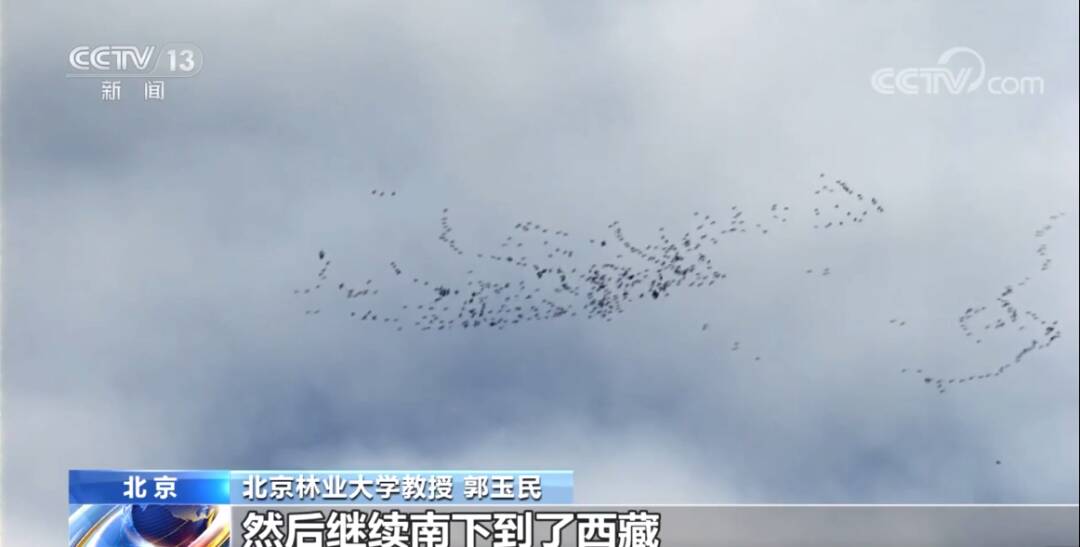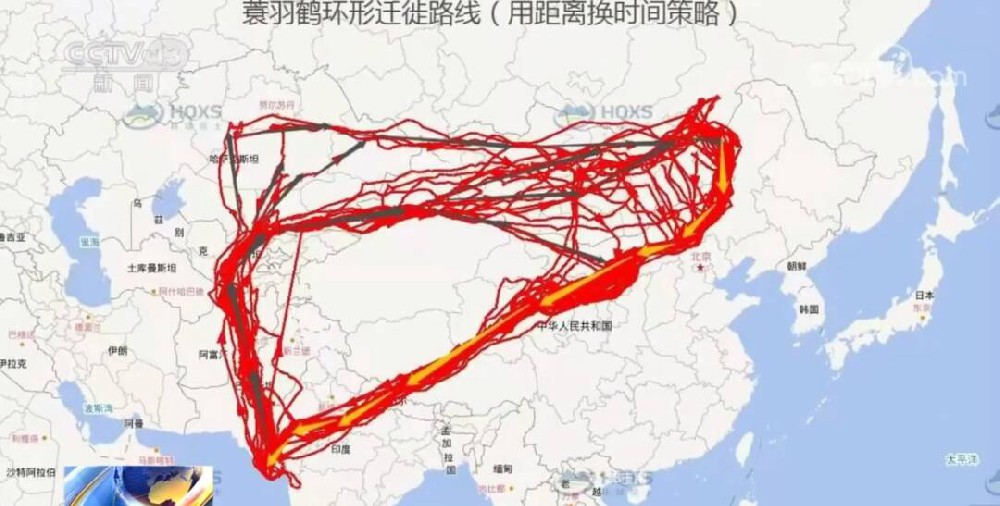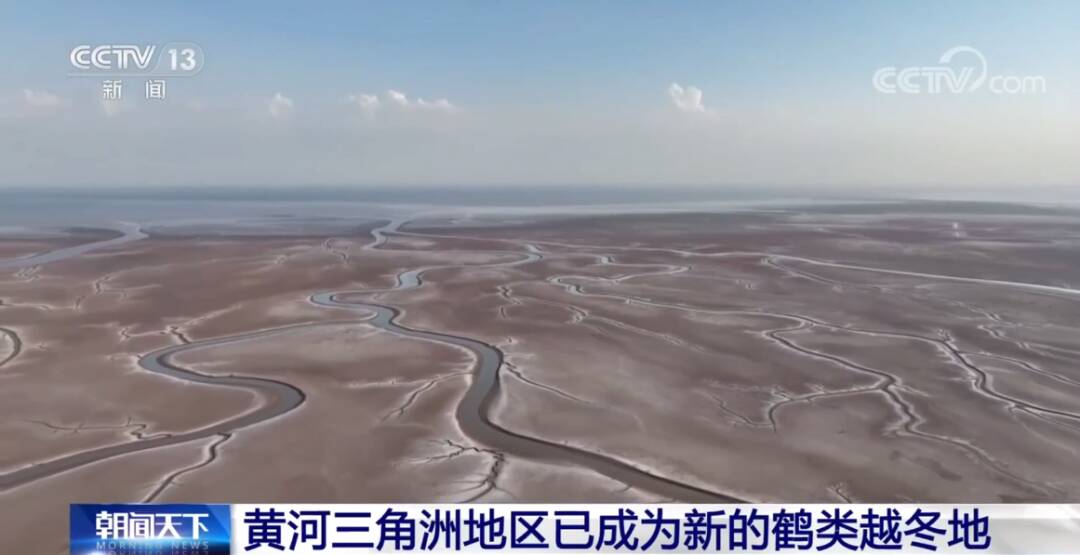The Demoiselle Crane is also known as the Lady Crane. As the name suggests, its appearance is as graceful as a lady's and is endowed with a delicate, elegant and quiet beauty in traditional Chinese culture. But it has a persevering character, has a tenacious ability to survive in the wild, and is also the creator of the "miracle of flight" in nature. In recent years, our country's scientific research team has used bird banding and satellite tracking methods to systematically study the migration routes of Demoiselle Cranes, and found that the flight trajectories of Demoiselle Cranes present a unique ring structure. This discovery has attracted worldwide attention. This is also the first time.

The Demoiselle Crane is named for the soft and long feathers on its front neck and throat that hang over the chest in the shape of a cape. It looks elegant and refined, but its movements are erratic. Demoiselle crane visits have also been recorded in the capital, Beijing. Experts believe that this is just an accidental phenomenon of "cloud traces and crane shadows".

Guo Yumin, professor at Beijing Forestry University: There is no way to confirm where it came from, but it must have come from breeding groups further north.
In autumn, Demoiselle Cranes set out from their birthplace to spend the winter on the coast of India. This is a long journey that runs from northeast China to southwest China, covering a total distance of more than 5,000 kilometers.

Guo Yumin, a professor at Beijing Forestry University: After the Demoiselle Cranes depart from their breeding grounds in Russia or Mongolia, they fly west-southwest along the edge of northern Hebei in our country and the Duolun and Lanqi areas of Inner Mongolia to Qinghai. At Qinghai Lake Pass diagonally on the east side, and then continue south to Tibet.

Legend has it that the Demoiselle Cranes need to "fly over Mount Everest" during their winter migration. In fact, this is a huge misunderstanding caused by the shooting angle.
Guo Yumin, professor at Beijing Forestry University: Some people say that it flies over Mount Everest. No, it flies over the Himalayas. It does not need to fly over Mount Everest. It has to pass through the mountain pass.
Even when flying over a certain pass in the Himalayas, the Demoiselle Crane still faces the threat of extreme cold and strong winds, and has to find a "window period" to complete the crossing challenge.

Guo Yumin, professor at Beijing Forestry University: I crossed the Himalayas around the beginning of October, descended to Nepal, then to India, and finally went to the coastal areas of India to spend the winter.
According to satellite tracking images, the Demoiselle Crane, which had overwintered on the coast of India, chose a completely different and longer route to return to its birthplace.

Guo Yumin, a professor at Beijing Forestry University: Go directly north instead of following the original route. We left in March and followed the Ili River Valley around April. As soon as we entered the country, we crossed two deserts and went directly to its breeding ground.
From the eastern route to the south for the winter, and from the western route to the north to reproduce, the Demoiselle Cranes have carved out a magnificent circular migration route through thousands of miles and difficulties, which was discovered for the first time by Chinese researchers. At the same time, experts pointed out that this "circular trajectory" is not the only migration strategy of the Demoiselle Crane.

Guo Yumin, Professor of Beijing Forestry University: Some Demoiselle Cranes that breed in Central Asia migrate to Africa, and there is no such circular migration route. Different groups in different regions have different migration strategies.
Experts count the habitats of cranes in China
According to experts, Demoiselle Cranes choose to migrate in a circular route to avoid various risks in nature as much as possible and improve their breeding and survival capabilities. In the long-term natural evolution, cranes have not only explored the optimal migration routes, but also divided their respective living territories, which together constitute this colorful and orderly "crane world".
Of the 15 existing species of cranes on earth, China accounts for 9 species. The nine species of cranes living in China have divided their respective activity territories through long-term natural selection. They divide their territories into territories ranging from plateaus to plains, and lakes and swamps with excellent water quality are the common first choice for cranes living at all altitudes.

Guo Yumin, professor at Beijing Forestry University: The black-necked crane has taken over the entire plateau, the Qinghai-Tibet Plateau and the Yunnan-Guizhou Plateau. The white cranes went to the tundra to breed, and the red-crowned cranes took over the reed swamps.
After the flat wet meadows are prioritized, dense forest wetlands are also a good choice. Here, the bald crane lives comfortably and comfortably. Although white-naped cranes occasionally cohabit in the surrounding area, they do not disturb each other. It seems that a boundary between them has been drawn for them to live in peace and harmony.

Guo Yumin, professor at Beijing Forestry University: White-naped cranes and red-crowned cranes are sometimes distributed in the same area. The best position is occupied by the red-crowned crane, with the white-naped crane at the edge. The white-headed cranes were so crowded that they went to the forest wetland.
Demoiselle cranes are petite and do not have the advantage of occupying territory. After being able to pick out the remaining relatively dry territories, Demoiselle cranes improve their survival ability by tempering themselves. This is why although their habitat is relatively harsh, their population size has reached How to survive with more than 200,000 animals.

The gray crane, with a global population of more than 500,000 and the largest number of cranes in China, has a more Zen-like way of survival: not to pick on its territory or its neighbors.
Guo Yumin, a professor at Beijing Forestry University: Gray cranes are now widely distributed in Eurasia. They go wherever they can, including farmland, farmland edges, and even river bottoms. It is eclectic, and it is precisely because of this that the number of gray cranes in the world is still more than 500,000.
The Yellow River Delta has become a new wintering ground for cranes
The Yellow River Delta National Nature Reserve is located at the mouth of the Yellow River in Dongying City, Shandong Province. It is an important "transit station" and wintering ground for migratory birds from inland Northeast Asia and the Western Pacific Rim. Birds that overwinter in the Yellow River Delta include five species of cranes, four of which are national first-level protected species, including white cranes, white-headed cranes, red-crowned cranes and white-naped cranes. In recent years, the scientific research team of Beijing Forestry University has carried out winter crane surveys and monitoring in the Yellow River Delta Reserve and its surrounding areas, and has made many scientific discoveries. During this period, some birds that had had accidents were also rescued.

Where the Yellow River enters the sea, it is also a place where many birds come from all directions to spend the winter. Life surges under the silence, and birdsong rises and falls in the vastness. Looking at the flat and vast lakes, swamps and wetlands, it does not bring convenience to the research team members. Although the cranes have migrated from all over the world, it is difficult to distinguish their local accents when they are gathered together. It is really difficult to understand the composition of their members. It takes some effort.
Wen Lijia, a doctoral candidate at Beijing Forestry University: Near the 1200 Management Station of the Yellow River Delta National Nature Reserve, although the terrain is flat, the visibility is poor due to fog in winter, and the distribution of cranes is relatively scattered, making it difficult to enter some areas.

When a large number of cranes come to spend the winter in groups, it is inevitable that some individuals will have accidents. Just in the past few days, the scientific research team worked with volunteers to rescue two injured white cranes in the outer farmland.
Volunteer Ding Hongan: After two days of emergency treatment, the two white cranes were finally out of danger. After ensuring that all physical indicators were normal, we released the two white cranes.

According to satellite data sent back by the trackers, the two white cranes are still active in the Yellow River Delta, where they live and overwinter. So, what kind of magical charm does the Yellow River Delta have for cranes? It is understood that there are less than 6,000 Siberian Cranes in the world, but last year more than 600 individuals were found overwintering here. Due to the large number of other types of cranes, precise data are still under further investigation and monitoring.
The Yellow River Delta is rich in water, grass, fish and shrimp. Not only can it become a preferred wintering destination for cranes, but some cranes even take advantage of the high-quality living conditions here to start having children and develop their wintering areas into breeding grounds. land.

Guo Yumin, professor at Beijing Forestry University: In 2020 (overwintering), breeding red-crowned cranes were also discovered in the Yellow River Delta.
Experts remind that the protection of the Yellow River Delta and its surrounding areas is very important. The Yellow River sediment is further creating larger new wetlands, and the scientific research team will further strengthen the investigation and monitoring work here.

Guo Yumin, professor at Beijing Forestry University: This place may become a very important habitat for wintering cranes in our country in the future. Therefore, if monitoring is done early, data will be available early.
This article is reproduced from [CCTV News Client]
animal tags:
We created this article in conjunction with AI technology, then made sure it was fact-checked and edited by a Animals Top editor.